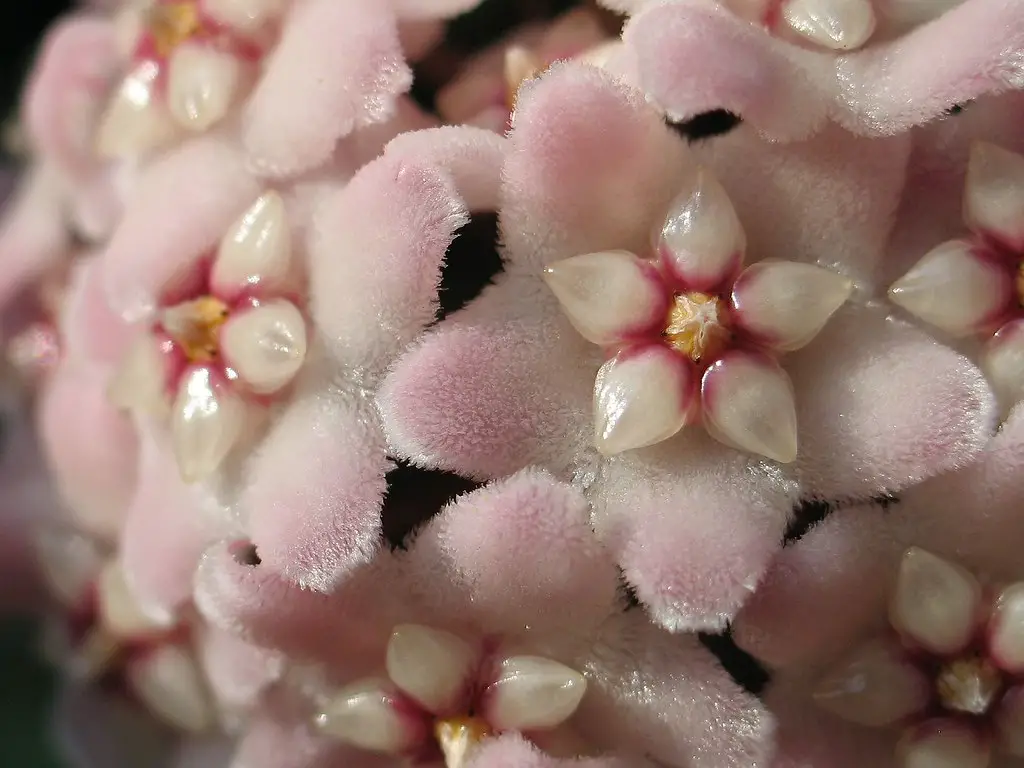Hoya Compacta, often recognized for its unique, twisted leaves, is a fascinating houseplant that is both beautiful and intriguing. Also known as the Hindu rope plant, it’s a cultivar of Hoya carnosa, but with leaves that are twisted and curled, resembling thick ropes or braids. Its unusual appearance draws the eye, making it an exciting addition to any collection of indoor plants.
Native to Asia and Australia, Hoya Compacta produces beautiful clusters of waxy, star-shaped flowers that give off a pleasant fragrance. The combination of its unique foliage and gorgeous blooms makes it a sought-after choice for enthusiasts and collectors.
However, Hoya Compacta is more than just an attractive ornament. It’s also a robust plant, tolerating a variety of indoor conditions and making it suitable for both beginner and experienced gardeners. Caring for Hoya Compacta is generally straightforward, and following the right guidelines can lead to a thriving and visually striking plant.
| Attribute | Details |
|---|---|
| Common Names | Hindu Rope Plant, Krinkle Kurl |
| Botanical Name | Hoya Compacta |
| Family | Apocynaceae |
| Plant Type | Evergreen Perennial |
| Mature Size | Up to 2 feet |
| Sun Exposure | Bright, indirect light |
| Soil Type | Well-drained, organic soil |
| Hardiness Zones | 10-11 |
| Native Area | Asia, Australia |
Hoya Compacta Care
Caring for Hoya Compacta is not very complicated, but it requires understanding the plant’s basic needs. Like most Hoyas, the Compacta prefers bright, indirect sunlight and well-drained soil that is rich in organic matter.
Watering should be done carefully, allowing the soil to dry out slightly between waterings. Over-watering can lead to root rot, a common problem with this plant. The use of a balanced fertilizer during the growing season can help the Hoya Compacta thrive, but avoid over-fertilizing, as this can lead to issues as well.
Light Requirement for Hoya Compacta
The Hoya Compacta needs bright but indirect sunlight. Placing it near a north or east-facing window will usually provide the ideal amount of light without risking sunburn on the leaves. Too much direct sunlight can damage the plant, while too little can hinder its growth and flowering.
Soil Requirements for Hoya Compacta
A well-draining soil rich in organic matter is essential for Hoya Compacta. A mix of regular potting soil with some perlite or sand will provide the necessary drainage and nutrients for the plant.
Water Requirements for Hoya Compacta
Watering Hoya Compacta requires careful attention. The soil should be allowed to dry slightly between watering, and over-watering must be avoided. The use of a well-draining pot is recommended to prevent the soil from becoming waterlogged, which can lead to root rot.
Temperature and Humidity
Hoya Compacta enjoys temperatures between 60-80°F (15-27°C). It can adapt to normal indoor humidity levels but might appreciate an occasional misting, particularly in drier environments.
Fertilizer
A balanced, water-soluble fertilizer applied during the growing season (spring and summer) helps support growth and flowering in Hoya Compacta. Fertilizing every four to six weeks is typically sufficient.
Pruning Hoya Compacta
Pruning Hoya Compacta is generally not required unless shaping the plant or removing dead growth. It is a slow-growing plant, so unnecessary trimming may hinder its development.
Propagating Hoya Compacta
Propagating Hoya Compacta is straightforward, commonly done through stem cuttings. A healthy stem with at least one leaf can be placed in water or soil, and roots should develop within a few weeks.
How To Grow Hoya Compacta From Seed
Growing Hoya Compacta from seed is rare but possible. Sow the seeds in well-draining soil, keep them moist, and provide warmth and indirect light for best results.
Common Pests & Plant Diseases
Mealybugs
Mealybugs can be an issue for Hoya Compacta and can be treated with insecticidal soap or neem oil.
Common Problems With Hoya Compacta
Root Rot
Root rot can occur if the plant is over-watered. Ensuring proper drainage and allowing the soil to dry slightly between watering can prevent this issue.
Lack of Blooming
A lack of blooming may be due to insufficient light or nutrients. Adjusting the plant’s location and following a proper fertilization schedule can remedy this problem.
Pro Tips
- Be patient with growth and blooming, as Hoya Compacta is slow to develop.
- Use a well-draining pot and soil to prevent waterlogging.
- Avoid frequent repotting; Hoya Compacta prefers to be somewhat root-bound.
- Provide bright, indirect sunlight for best growth and flowering.
- Keep away from direct drafts or sudden temperature changes.




